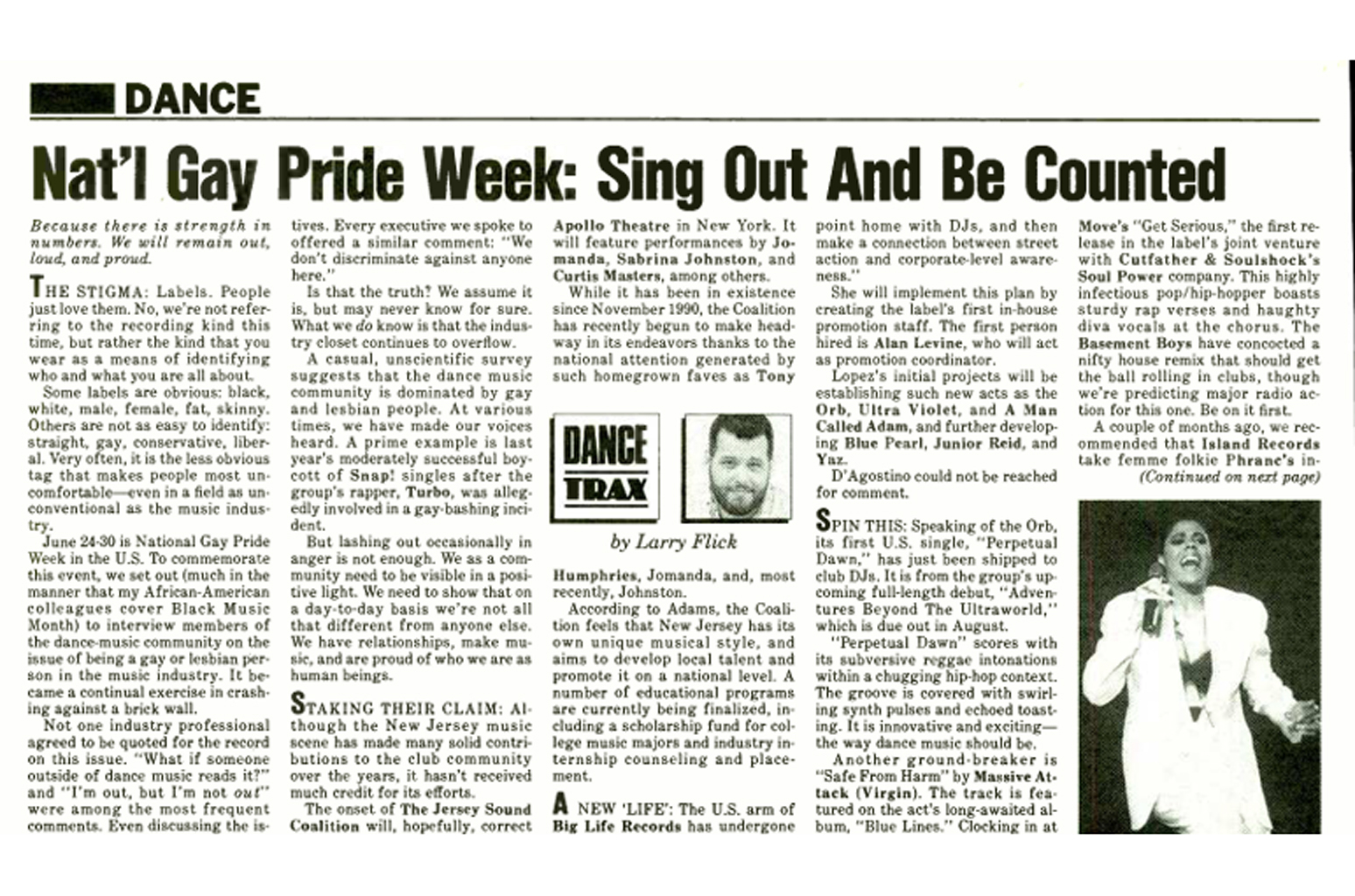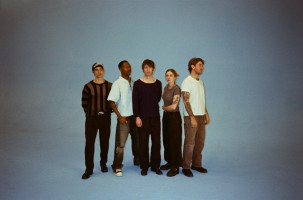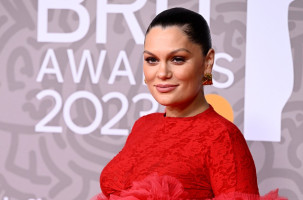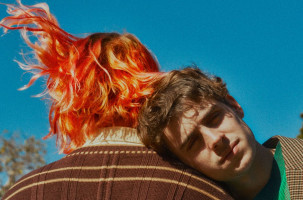In the space of 48 hours, the most communal and connective period of my professional life had become the most lonely and isolated.
It was June 1991. I was just under a year into my tenure as the dance music editor of Billboard magazine. Comfortably nestled on the 39th floor of the same building as MTV in New York City’s Times Square, Billboard was the holy grail of music journalism for a kid who spent his youth studying its every syllable and imagining what his byline would look like on its pages. Wandering from the subway through the tourist-filled streets of midtown Manhattan into the daily chaos was often overwhelming. It was the actualization of a fantasy.
The nine months leading up to this moment had been rigorous, but magical. Surviving those initial days at a job that had been held by journalistic icons like Brian Chin and Bill Coleman, who immediately preceded me, was tough. Both had effectively established strong personalities as writers with distinctive and popular points of view. After a bumpy first few months, I had begun to carve a small niche of credibility as a reporter, columnist and industry advocate for a musical community that was fighting for attention.
At the time, the glossy, synth-centric era of ’80s post-disco was evolving into the richer, darker hues of house music. Remixers like Frankie Knuckles, David Morales and Steve “Silk” Hurley had begun to prove their mettle as producers capable of fashioning frequently sub-par pop and R&B songs into hit-worthy club anthems that nudged their way onto top 40 radio. They attracted superstars like Madonna, Celine Dion, Cher and Gloria Estefan for song doctoring, while also birthing dance babies that included Crystal Waters, C+C Music Factory and CeCe Peniston. The laboratories for these tracks were venues like the Sound Factory in New York, Rage in Los Angeles and the Warehouse in Chicago, vastly different clubs with two important things in common: They were gay-populated, and their patrons were viewed as the purveyors of future trends. The vigor with which major labels and their top artists pursued this demographic and genre provided undeniable proof of their power.
It was a fun and increasingly high-profile time to be the dance music editor at Billboard. The music was extraordinary, the creatives were on peak form and they were fostered by a cadre of industry executives who worked with palpably high energy. Perhaps most notably, many of them were gay and lesbian-identified people. It was a common ground that allowed for a familial energy amid the requisite competition and rivalry. Any given week could include a cutthroat fight to the top of Billboard’s Dance Club Songs chart, or successfully nabbing the remixer du jour for a project. No matter what, there was an overriding sense that everyone had each other’s backs. We were ferociously protective of each other, despite any momentary differences. It was unlike anything I’d seen in other areas of the industry at the time. I was convinced that our ‘sisterhood’ was the core of the experience. As Stonewall Pride for the month of June ’91 inched closer, I set out to document the community and these remarkable people for my column.
With each call for an interview, I heard silence – or an incredulous “are you crazy? No!” I was shocked to discover that every person I invited to participate was either closeted or “private” about their personal identities. I remember pressing one particularly flamboyant person, asking “you don’t think your boss believes you’re straight, do you?” His reply? “He doesn’t ask. I don’t tell. It keeps me and my job safe.” I was stunned by the fear that etched his voice, even though it had quickly become familiar.
With desks and small cubicles crowding everyone into the same open-air space, the Billboard newsroom made for a lively, easily collaborative atmosphere on most days. On that particular deadline day, the normally energizing noise of conversation made my head hurt. I sat in front of the blank screen of my big and clunky Dell desktop computer. My planned report on Pride and community was in pieces. Eventually, I started to free associate my thoughts and feelings onto the keyboard. The result was an essay about the loneliness of being the only fully out person in my circle of fabulous queer colleagues. I questioned an industry that made piles of money from people who felt forced to remain silent. It made no sense. It still doesn’t.
Moments after sending my column to the copy desk, I approached Tim White, my editor-in-chief and mentor. I wondered if I had done the right thing. Was I possibly making things worse by calling attention to an unfair, if profitable, system? We read the piece together, and he assured me that I’d done the right thing. I vividly remember his words: “This is where you learn the need for journalistic distance from what is clearly a unique situation.” Relieved, I walked back to my desk and wrote down his last words of encouragement in my notebook: “This is a necessary story to tell.”
An hour later, all hell broke loose. A heated conversation had erupted between Tim and our publisher. Our publisher didn’t think it was appropriate content for the magazine. He deemed the column too personal and not applicable to the industry. As I got this information, I began to ask myself questions. I had been happily accepted as an openly gay man when I came out to my Billboard colleagues nearly a year prior. Or had I? Or was I being pressed into living that “don’t ask, don’t tell” professional existence that I’d been hearing about from others? Could I do it? Should I do it?
I realized that the months leading to this moment had changed me. I had become an activist. Dance music was no longer just a cool journalistic beat for me. It had become intertwined into a subculture of people. Much like punk and other niche genres, it was the expression of the “others” – those people who didn’t immediately fit into the mainstream. Those people had finally begun to trust me. To my mind, part of that trust was rooted in me telling a story that, for whatever reason, they could not. Letting go of that column, simply because of potential industry pushback and discomfort, felt like betrayal. The activist that I had become couldn’t fold. That left me wondering if my lifelong goal to be on the pages of my dream magazine was unravelling in a haze of homophobia.
Just as I was deciding that I was going to need to resign I was called into Tim’s office. He and my managing editor had convinced our publisher to let the column run. He wasn’t happy, but he eventually saw the necessity to tell the story. As he left for the day, the publisher said one last thing to me: “I hope you know what you’re doing.”
I did, sorta. That Friday morning of publication, our phones blew up. Yes, there were angry calls of protest. But there were also many calls of support. Piles of positive letters were sent to the editor, and an invitation to speak at the Heritage of Pride rally was offered. Sadly, the column also caused a rift between me and some of my sisters. I had shined a bright light on a comfortably dark corner of the proverbial room. Plus, each of these folks were associated with me, the now flagrantly queer dude at Billboard. The results were varied. A handful of people burrowed deeper into the closet, while others saw opportunities for advancement quickly disappear. In fact, one prominent club promoter lost his chance to add crossover radio promotion to his job. Thankfully, there were some who successfully seized the moment and drew attention to the inextricable link between their personal truth and their professional success and how it could build a profitable gay audience for their artists.
That column proved to be a beneficial benchmark in several other ways. The devastation of AIDS washed over the music business like a tidal wave, particularly in clubland. The need to be out became imperative, particularly as I documented death among our ranks in every column for several years to come. Oh, and that gay dollar became ever so mighty during the mid-’90s as labels funded gay-centric marketing departments, just as a spate of indie companies promising exposure to the queer buck became big business.
Five years later, I gathered all of those original music executives who had turned me down in 1991 for an article about how they’d each finally come out. It was the perfect conclusion to a chaotic, frightening era. I recently reminisced with one of those friends about the “old days.” We laughed about the intensity and romance of those times. He wondered if any of the younger industry activists knew our story. I said, “probably not.”
Until now.





